With opioid settlement money at $100 million this year, it still takes extra effort to create safe spaces for pregnant women to recover from addiction in Virginia
The story was originally published in Cardinal News with support from our 2024 National Fellowship and the Fund for Reporting on Child and Family Well-Being.
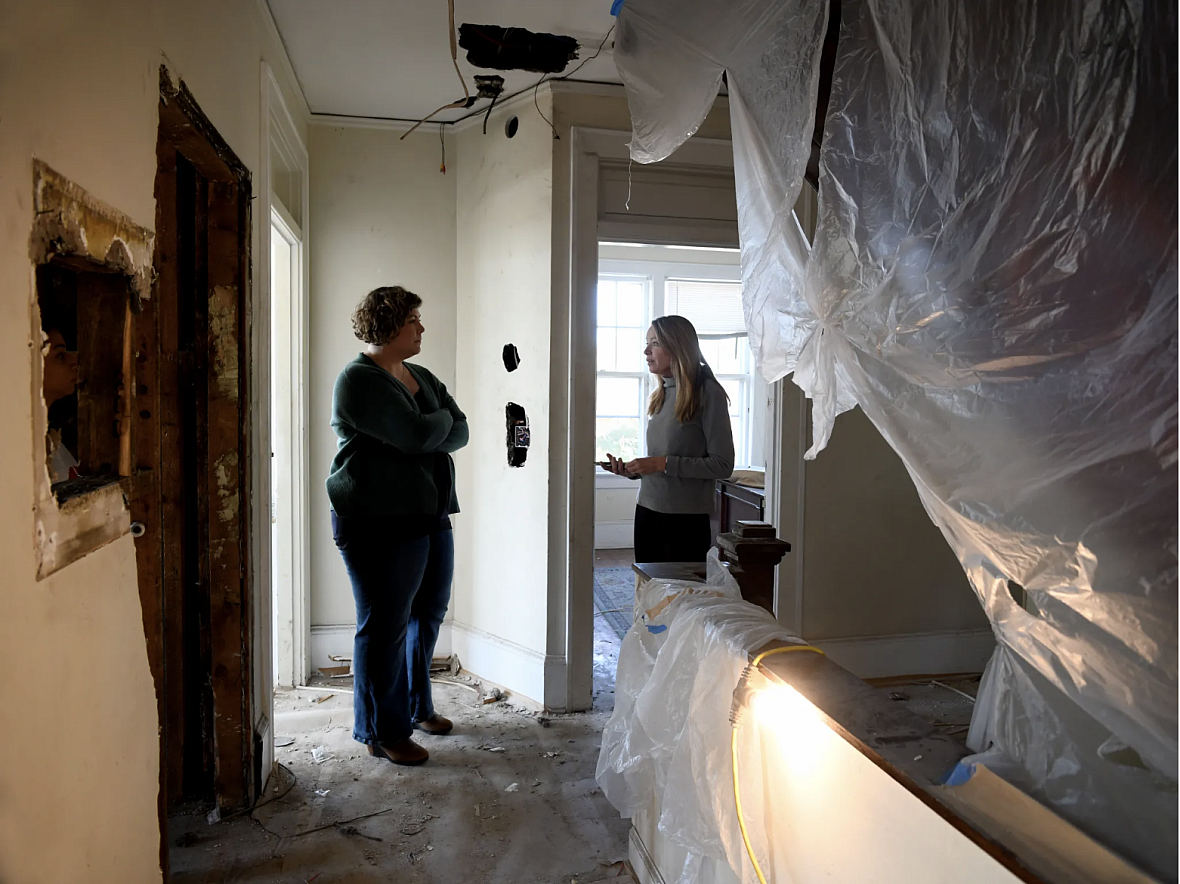
Ali Hamed-Moore, chief of compliance at Anderson Treatment (left), and Isabel Thornton, executive director at Restoration Housing, walk through construction at The Grove on Patterson, which is set to open in 2025.
Photo by Natalee Waters.
Fear of losing custody of their children: That’s the main reason pregnant women don’t access prenatal care when they’re using illegal drugs, said Bethany Karnes, an addiction specialist with the Cumberland Mountain Community Service Board. That, and feeling guilty.
In Virginia, doctors are required to notify social services any time a child comes in contact with illicit substances, even during pregnancy, but if the mother gives birth to a baby who is drug-free and has a plan in place for housing and prolonged recovery, the likelihood of keeping custody of the child is much higher, according to Karnes.
The most effective way to get pregnant women or mothers into drug treatment is to offer inpatient services that provide child care, according to Dr. Stephen Loyd, an internal medicine and addiction medicine physician who has chaired the Tennessee and West Virginia opiate abatement authorities.
When women can step away from environments where drug use is prevalent, and find a place safe for themselves and their children during their treatment, their chances of getting clean and staying that way improve.
Yet a woman seeking such treatment in Virginia would find only two residential facilities for pregnant women that also offer child care in the entire state. Those facilities are in Richmond and on the Eastern Shore.
A new facility is set to open in Roanoke in 2025 at the former site of Bethany Hall, which provided similar services for about 50 years. The addition of 16 residential treatment beds — each with space for a patient to have one child — is encouraging, but for those living in far Southwest Virginia, the gap in services remains, leaving many without this vital care.
The Virginia Opioid Abatement Authority, which was created in 2021 to manage funds from opioid settlements, distributes money for programs that address opioid addiction issues across the state. Very few rural localities have accessed funds for programs that serve pregnant and parenting women, in part, because smaller governments lack resources to build programs that can offer help to women facing addiction and pregnancy at the same time.
‘We used to just want to lock them up and throw away the key’
If you remember Dr. Samuel Finnix from the Hulu adaptation of Roanoke author Beth Macy’s book “Dopesick,” then you already know something about Dr. Stephen Loyd. Drawing from his own experience with addiction, Loyd describes what he sees as two distinct systems of care in the United States: one for those with money and status, and a far more challenging, even sinister, system for those without privilege.
Loyd was chief resident at a hospital when he first abused Vicodin, an opioid pain reliever. Four years later, he was still practicing medicine and teaching residents in the hospital, all while struggling with a full-blown opioid addiction. When he finally sought help, he entered a residential treatment program. He returned to treating patients after completing rehab. Today, he’s been in recovery for about 20 years.
Throughout his 95-day inpatient stay for addiction treatment, he continued to receive a paycheck. He never lost his medical license and was able to continue working.
The women he treats, he said, aren’t nearly as fortunate.
“We used to just want to lock them up and throw away the key,” Loyd said.
Miracle Hawkinberry, who lives in Buchanan County and whose story is told in an earlier installment in this series, went through detox in jail after failing a drug test, resulting in a probation violation in 2023. The time away from an unsafe home environment proved vital to jumpstarting her recovery. That the jail time might have been a godsend for her stands in stark contrast to Loyd’s recovery story.
He recalls a time when OB-GYNs didn’t screen for drug use because they didn’t know how to help women struggling with addiction. Loyd said that the stigma in the medical community around addiction has improved, but there’s still a long way to go.
Faith-based communities are another group whose understanding and action is vital in locally addressing the opioid crisis, Loyd said. In Roanoke, many churches contributed donations to support the program that in 2025 will provide inpatient treatment with child care for pregnant and parenting mothers.
Local support and buy-in like this is what’s needed to bring more inpatient treatment facilities for women and children, Loyd said. And these services are essential, he said.
“The number one reason women don’t go to treatment I hear is, ‘Can I bring my kid. No? Well then I’m not going,’” Loyd said, adding that many of these women don’t have a support system who are safe caregivers for their children.
As part of her drug court conditions, Hawkinberry was connected with professionals at the Cumberland Mountain Community Service Board, which covers Russell, Tazewell and Buchanan counties. There, she talked with social workers and was connected to resources that helped her buy supplies for her newborn. With support from a peer specialist, she found a job as a caregiver for her ailing grandmother and finally regained her driver’s license.
Reflecting on her experiences, she sometimes feels she was treated with more respect during her prenatal appointments in jail than she had been in hospitals in her prior pregnancies.
For decades, such respectful help was available in Roanoke. Isabel Thornton grew up knowing that her community provided such help, in a place right next door to her church.
From delivering diapers to restoring an institution
Growing up attending Christ Episcopal Church in Roanoke, Thornton was familiar with Bethany Hall, the inpatient addiction treatment facility next door that served pregnant and parenting women for nearly 50 years. Members of her church often volunteered at the nonprofit, heading over to rock babies and comfort newborns. Diaper drives were a regular event at Christ Episcopal, supporting the women and children at Bethany Hall just steps away.
Every Sunday, Thornton remembers the priest would give an update on the activities at Bethany Hall. Each week, they’d ask the congregation for donations of baby supplies or anything else that could be spared for the women next door.
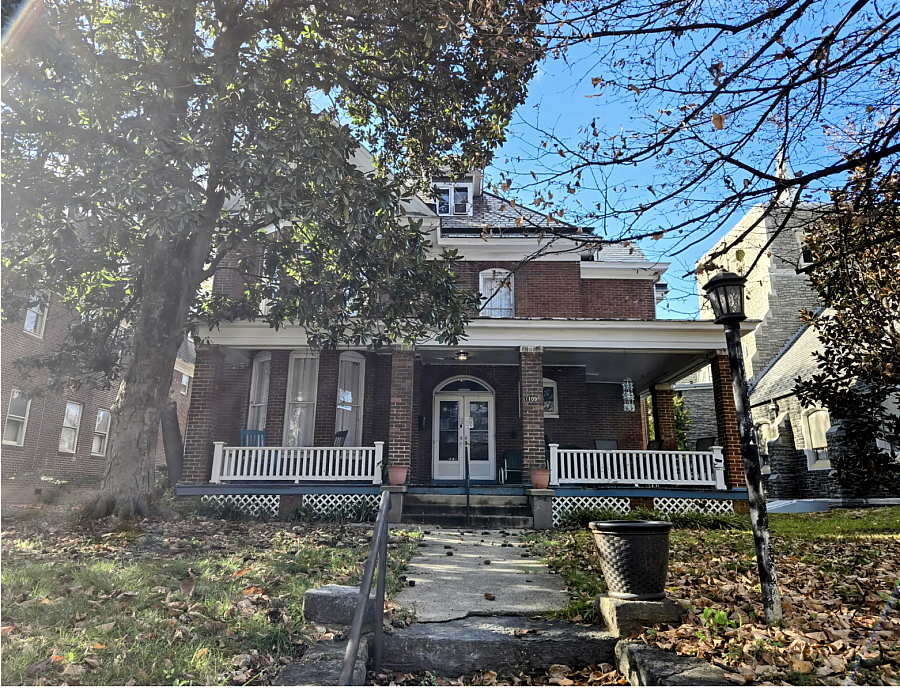
The historic house in Roanoke’s Old Southwest neighborhood, once home to Bethany Hall, served as an inpatient drug treatment center for pregnant and parenting women. Next door, Christ Episcopal Church, which owns the building, supported the program through diaper drives and by encouraging congregation members to volunteer.
Photo by Emily Schabacker.
Her church owned the building where Bethany Hall was located. The two structures stood so close that, standing between them with arms outstretched, you could touch both at once, Thornton said.
When the treatment center closed in 2022, Thornton was surprised that Roanoke residents didn’t seem to take much notice.
“The broader community didn’t understand what Bethany Hall had been doing for so long,” Thornton said.
As a mother of four, Thornton understands the challenges that come with having children.
Thornton is the executive director and founder of Restoration Housing, a nonprofit that buys historic homes in Roanoke and transforms them into affordable housing. She has led the nonprofit for 10 years, but this year she is restoring a home specifically to serve as a residential addiction treatment facility for pregnant and parenting women. The new treatment center, set to open in February 2025, will be called The Grove on Patterson.
Thornton was too young then to volunteer at Bethany Hall, but now that her children are grown up, she’s thought about offering to rock babies for the moms who will come to stay at the center she’s helping to open.
During a walkthrough in August, chairs were arranged in a half-circle in one of the main rooms of the historic home, still under renovation. The chairs were set up to illustrate how this space will, once complete, serve as the setting for daily group therapy sessions where women can share their struggles with addiction and the unique challenges of parenting while in recovery.
The house will soon be filled with the sounds of babies cooing and occasionally crying, as it offers enough bedroom space for 16 mothers and 16 infants. The women will also participate in individual counseling and parenting classes. Here, they’ll learn about developmental milestones and techniques for bonding with their babies. This bonding time — one of the unique benefits of inpatient treatment for new mothers — is essential to nurturing a strong mother-child connection.
The Grove is designed for patients in early recovery who need a structured, 24-hour supervised environment. It will serve as an intensive, foundational step before transitioning patients into less intensive recovery programs, Thornton said.
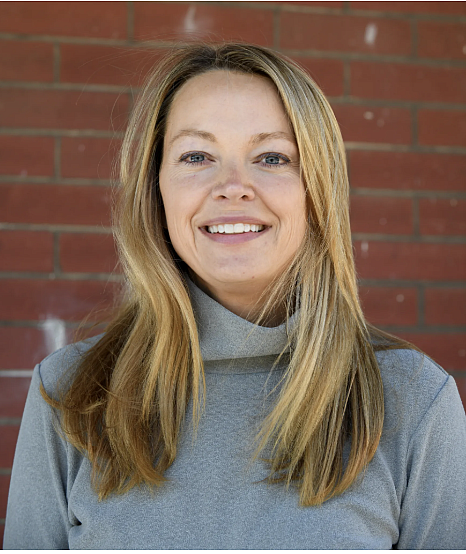
Isabel Thornton, executive director at Restoration Housing.
Photo By Natalee Waters.
Two team members will be on site at all times to provide essential support beyond help with child care, ensuring that women have assistance available whenever they need it. Volunteers will also be on-site during the day, ready to lend a hand by rocking babies or watching over them while they nap.
Most women will enter the program while pregnant and will typically stay about three months after giving birth, allowing time for recovery and early parenting support, Thornton said.
“[Becoming a mother] is a huge point of transition and personal growth and development. It’s also very triggering for anything you’ve ever dealt with in your life,” Thornton said. “I’m a woman who has been very privileged, and with every privilege I’ve had I still struggled. So when you’re coming from very vulnerable positions, whether it’s unstable housing or unstable relationships or trauma from childhood, and couple that with motherhood, I know that’s so much harder.”
As a key player in the city’s affordable housing scene, Thornton has often been approached by other service providers to develop treatment housing, but Restoration Housing’s funding model has made such projects challenging to execute.
The organization relies on historic tax credits and state, local and federal grants for construction costs, all of which are geared toward creating affordable apartment units. The funding doesn’t extend to recovery housing, which requires multiple bedrooms, commercial kitchens and dedicated spaces for group therapy.
Then one day, Thornton got a call from an old high school friend who had a vision for turning this dream into reality.
Dr. Kim Simcox, an OB-GYN at Carilion Clinic and founder of a program that supports pregnant women with substance use disorder, proposed a plan: With the support from community partners and her own expertise as an addiction medicine specialist, they could launch a new inpatient treatment program in Roanoke. This program, similar to Bethany Hall, would have a diversified funding model that would help it stay financially stable, avoiding the financial challenges that led to Bethany Hall’s closure.
[Disclosure: Carilion Clinic is one of our donors, but donors have no say in news decisions; see our policy.]
Simcox knew Thornton’s organization could handle the housing side of the new venture. Carilion Clinic would provide the medical services, while Anderson Treatment — a local organization that has offered addiction treatment services in the community since 2017 — would manage the therapies needed for recovery.
Simcox, Thornton said, can be very persuasive.
Funding is also persuasive, especially when it comes to getting more funding. One place Simcox and Carilion looked for money was the state’s opioid abatement program.
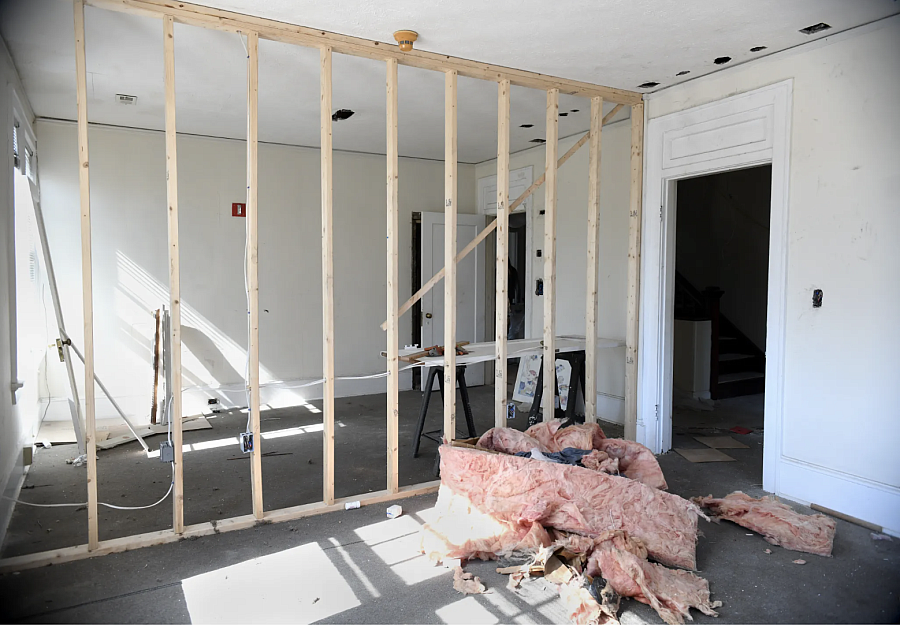
Two bedrooms have been framed out at The Grove on Patterson. Each woman who is treated there can have one child with her.
Photo by Natalee Waters.
Opioid money’s piling up: What made The Grove possible was other funding, planning, teamwork
For the 2024 fiscal year, the Virginia authority received about $108 million from settlements with opioid manufacturers, according to the state’s Opioid Abatement Authority website. In June 2023, just before the new fiscal year began, the authority announced that about $56 million had been awarded to cities and counties around the state.
The remaining funds are part of a long-term strategy, with the authority expected to receive further settlement payments to continue funding these programs into the future, according to Tony McDowell, director of the organization.
Settlement funds are expected to be distributed to the state each year until at least 2041. In that time, the state will likely receive about $1.1 billion, according to the abatement authority website.
This year, the authority allocated about $295,000 directly to Buchanan County, where the rate of babies born with a drug dependency was the highest in Virginia, nearly six times the state average. While these funds are automatically distributed, the county is still required to meet reporting and accountability standards to ensure that the funds are used for approved opioid abatement purposes. The exact amount of these funds actually used in 2024 isn’t readily available yet, as the authority plans to begin reviewing county reports in the coming months.
The Virginia authority actively invites city and county governments to submit grant applications that support programs for pregnant and parenting women, said McDowell. But few rural counties in Southwest Virginia have taken advantage of the funds for programs like The Grove in Roanoke.
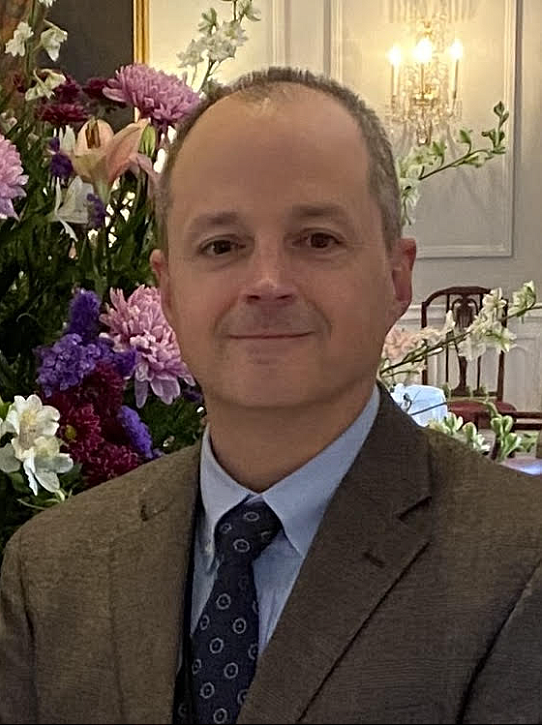
Tony McDowell.
Courtesy of McDowell.
“The problem is that’s a pretty specialized program or goal. A lot of communities need to start somewhere, so they’re starting where the most number of people have the greatest need. They’re trying to do the most they can for the largest number of people,” McDowell said.
“For smaller governments, housing and child care is a big lift,” he added, noting that solving these problems requires coordination across multiple departments and services.
The Grove on Patterson, the residential treatment facility set to open in Roanoke in 2025, received some funding from the authority, but in order to stay financially stable, Simcox worked with other local organizations to diversify the funding for the program.
Restoration Housing purchased the property that used to house Bethany Hall.
The total restoration expenses for the building come to $385,972, Thornton said. Other grants and fundraising efforts cover additional expenses of about $544,000 for alarm systems, furniture and acquisition of the property.
Virginia’s abatement authority contributed $280,472 in grant funding to support the treatment services, but as The Grove begins seeing patients next year, the coalition will need to continue applying for grants and fundraising to cover gaps left by Medicaid, which often reimburses below the actual cost of providing care, Thornton said.
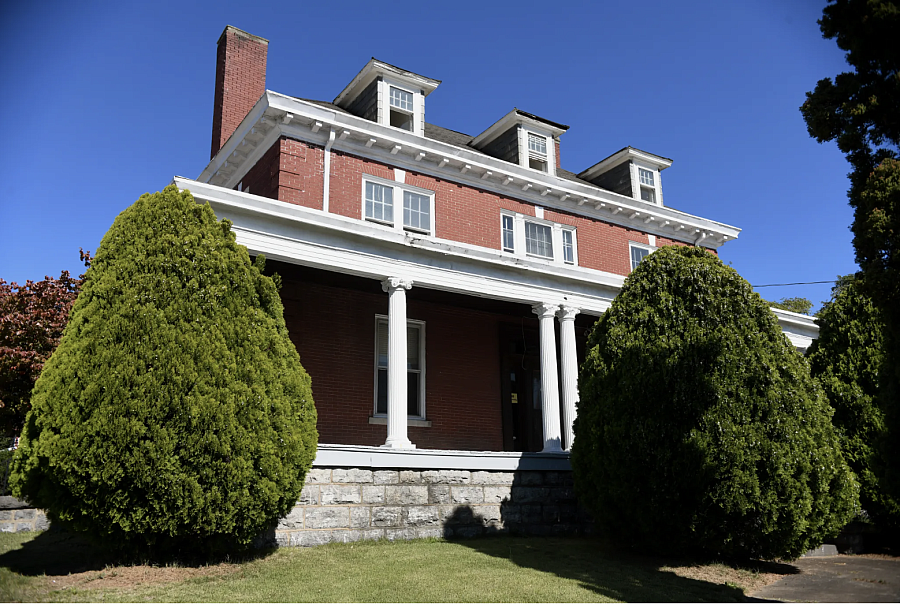
The Grove on Patterson is set to open in 2025
Photo by Natalee Waters
Bethany Hall, which used to provide inpatient treatment for women and their children, closed its doors before opioid abatement funds became available to Virginia localities, but even so, it’s unclear if partnerships can keep programs like this afloat.
“The Grove will provide high-level care. We’re hoping for long and fruitful relationships with community partners to keep it open,” Thornton said.
Programs for pregnant and parenting women that offer child care and family support don’t necessarily require greater resources than other inpatient treatment facilities, said Loyd with the West Virginia and Tennessee abatement authorities. Instead, he emphasized the need to reflect on the values prioritized in the community.
“My world changed when I started working with this patient population,” Loyd said. “I had no idea the trauma these women have faced. … I can never unsee that. We have to look at what our priorities are as a society.”

